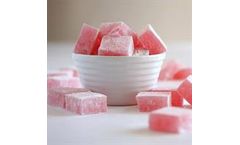Wine Processing Articles & Analysis: Older
9 articles found
In the mechanical process, pulp has high hardness and bulkiness, while in the biochemical process, pulping can save energy by 20-40%. ...
Fermentation, the chemical process that uses yeast to convert sugars to ethanol, is at the heart of the wine production process and requires accurate CO₂ measurement to ensure quality wines. Temperatures and conditions in wineries are very carefully controlled to ensure that fermentation does not occur too fast, distorting the ...
The VITISPEC project is a 2 year industry driven research and development project that is being funded by the European Commission’s Seventh Framework Programme under ‘Research for SME – ...
Red wine contains protein and salt, which precipitates at low temperatures and causes turbidity in the wine. ...
About Wine Storage Wine storage optionsThere are three main ways to store your bottles of wine safely and securely:Wine cellar – this is the ideal way to store your wine bottles, temperature and humidity controlled ide... ...
Sweetener Membrane filtration and continuous ion exchange technology: reform sweetener production process. Wine Crossflow membrane filtration for wine clarification solution is an ideal way for wineries. ...
Fermentation, the chemical process that uses yeast to convert sugars to ethanol, is at the heart of the wine production process and requires accurate CO₂ measurement to ensure quality wines. Temperatures and conditions in wineries are very carefully controlled to ensure that fermentation does not occur too fast, distorting ...
Fermentation, the chemical process that uses yeast to convert sugars to ethanol, is at the heart of the wine production process and requires accurate CO₂ measurement to ensure quality wines.Temperatures and conditions in wineries are very carefully controlled to ensure that fermentation does not occur too fast, distorting the flavour and alcohol ...
A case study on the Pasqua Vigneti e Cantine Winery, Verona Italian wine is enjoyed by many all over the world. However, to grow the best grapes, develop the best flavour and ensure success on a global scale, a seamless production process needs to be in place behind the scenes. ...








